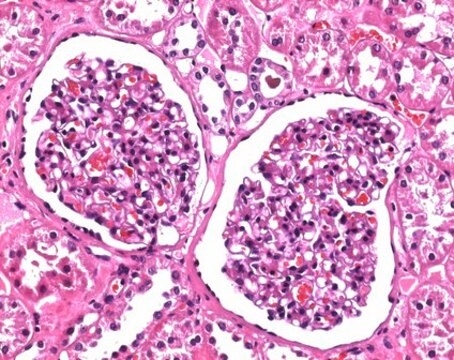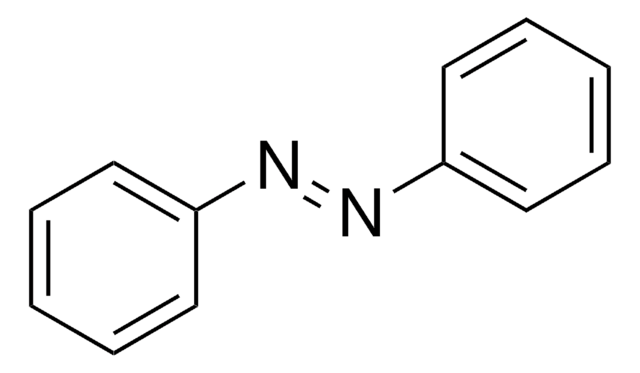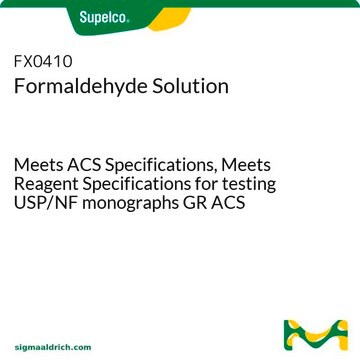441244
Paraformaldehyde
prilled, 95%
Sinônimo(s):
Polyoxymethylene
About This Item
Produtos recomendados
densidade de vapor
1.03 (vs air)
pressão de vapor
<1.45 mmHg ( 25 °C)
Ensaio
95%
Formulário
prilled
temperatura de autoignição
572 °F
Lim. expl.
73 %
pf
120-170 °C (lit.)
temperatura de transição
sublimation point 150 °C
solubilidade
alcohol and cold water: slightly soluble
ethers, hydrocarbons and carbon tetrachloride: insoluble
densidade
0.88 g/mL at 25 °C (lit.)
cadeia de caracteres SMILES
[O-]#[C+H2]
InChI
1S/CH2O/c1-2/h1H2
chave InChI
WSFSSNUMVMOOMR-UHFFFAOYSA-N
Procurando produtos similares? Visita Guia de comparação de produtos
Descrição geral
Paraformaldehyde is also referred as polyoxymethylene. It participates in the regioselective reductive coupling reactions of dienes, alkynes and allenes in the presence of ruthenium catalyst. It also participates in the synthesis of esters, via alkoxycarbonylation of alkenes.
Aplicação
Características e benefícios
Decomposes in hot water to give formaldehyde.
Palavra indicadora
Danger
Frases de perigo
Declarações de precaução
Classificações de perigo
Acute Tox. 4 Inhalation - Acute Tox. 4 Oral - Carc. 1B - Eye Dam. 1 - Flam. Sol. 2 - Muta. 2 - Skin Irrit. 2 - Skin Sens. 1 - STOT SE 3
Órgãos-alvo
Respiratory system
Código de classe de armazenamento
4.1B - Flammable solid hazardous materials
Classe de risco de água (WGK)
WGK 2
Ponto de fulgor (°F)
Not applicable
Ponto de fulgor (°C)
Not applicable
Equipamento de proteção individual
Eyeshields, Faceshields, Gloves, type P3 (EN 143) respirator cartridges
Escolha uma das versões mais recentes:
Já possui este produto?
Encontre a documentação dos produtos que você adquiriu recentemente na biblioteca de documentos.
Os clientes também visualizaram
Nossa equipe de cientistas tem experiência em todas as áreas de pesquisa, incluindo Life Sciences, ciência de materiais, síntese química, cromatografia, química analítica e muitas outras.
Entre em contato com a assistência técnica









